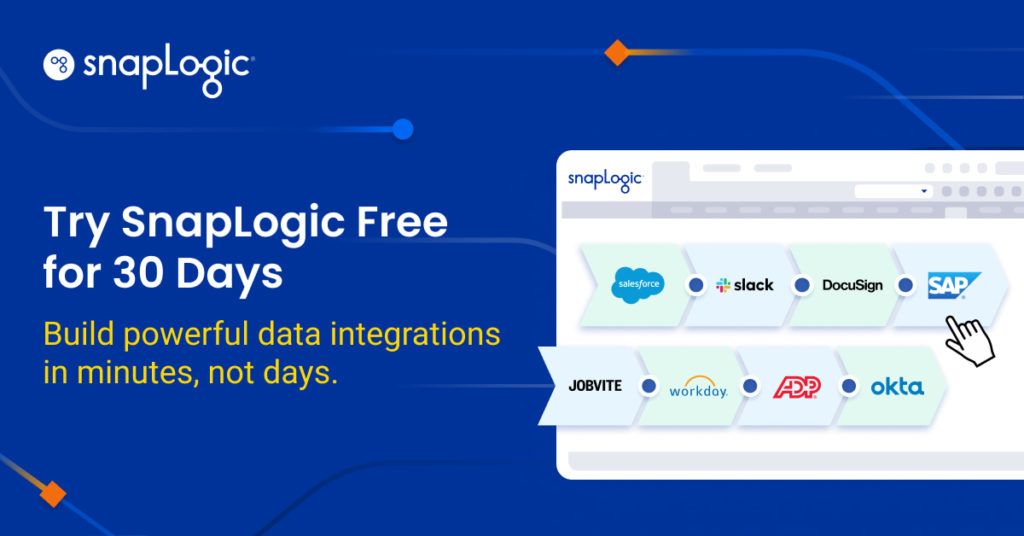What is the Workday EIB?
The Workday Enterprise Interface Builder (EIB) is a robust tool designed for seamless data integration within the Workday platform. In our rapidly evolving digital business world, managing data efficiently is not just beneficial—it’s essential.
As organizations increasingly embrace cloud solutions, the importance of tools like EIB becomes evident. But why is the Workday EIB so special?
In this guide, we’ll dive deep into the intricacies of EIB, highlighting its standout features and the advantages it brings to data management. Whether you’re just starting with Workday or looking to optimize your current setup, we’ve got insights to help you harness the power of the EIB. Join us on this exploration and elevate your data strategy.
What are the basics of Workday EIB?
The Workday Enterprise Interface Builder, commonly referred to as EIB, is a cornerstone of the Workday integration toolkit. But before diving into its advanced functionalities, it’s essential to grasp its foundational concepts.
Purpose and Design:
At its core, EIB is crafted to facilitate both the import (inbound) and export (outbound) of data within the Workday environment. It serves as a bridge, allowing data to flow seamlessly between Workday and other systems, ensuring that data-driven processes remain uninterrupted.
Graphical Interface:
One of the standout features of EIB is its user-friendly, no-code graphical interface. This design empowers users, even those without a technical background, to set up, configure, and manage integrations. It’s all about making complex tasks straightforward.
XML Excel Templates:
EIB operates using XML Excel templates. These templates, generated directly from the Workday system, provide a structured format for data. They outline the necessary fields for data extraction or population, ensuring accuracy and consistency in data transfers.
Inbound vs. Outbound EIBs:
- Inbound EIBs: These are designed to load data into Workday. Whether it’s employee details, financial transactions, or any other dataset, inbound EIBs ensure that data is ingested accurately and efficiently.
- Outbound EIBs: On the flip side, outbound EIBs focus on extracting data from Workday. This could be for reporting, sharing data with external systems, or any other purpose that requires data to be pulled from Workday.
Understanding these basics provides a solid foundation for delving deeper into the world of Workday EIB. As we progress, we’ll explore how these foundational elements play a role in more advanced integration scenarios and how they contribute to making Workday EIB a preferred choice for many organizations.
The History of Workday EIB

The Workday Enterprise Interface Builder, more commonly known by its acronym EIB, has a storied past that mirrors the evolution of data integration in the contemporary business world. EIB stands for “Enterprise Interface Builder,” a title that perfectly captures its core purpose: crafting interfaces for seamless data integration within the Workday ecosystem.
Workday’s inception in 2005 marked the beginning of a new era in how organizations approached their finance and human capital management. As the platform expanded, the demand for a potent integration tool grew in tandem. This need led to the birth of EIB, a tool designed to demystify the often intricate realm of data integration.
As EIB began to solidify its place in the market, another significant development was on the horizon: the partnership with SnapLogic. Recognizing the complementary strengths of both platforms, Workday and SnapLogic embarked on a collaborative journey. This partnership aimed to enhance the capabilities of EIB by leveraging SnapLogic’s advanced integration solutions.
SnapLogic’s integrations brought a new dimension to EIB. With SnapLogic’s robust connectors and pipelines, EIB users could now seamlessly connect Workday with a myriad of other platforms and services. This integration not only expanded the potential use cases for EIB but also simplified complex data workflows for businesses.
One of the pivotal moments in EIB’s evolution was the unveiling of its no-code graphical interface. This innovation, further enriched by SnapLogic’s integration capabilities, democratized data integration. It empowered even those without technical backgrounds to effortlessly set up, configure, and manage integrations.
Today, the synergy between Workday’s EIB and SnapLogic’s integration platform stands as a testament to the power of collaborative innovation. Their combined history showcases a journey from basic data management tools to sophisticated solutions tailored for the multifaceted challenges faced by modern enterprises.
What key features and functionalities does Workday EIB offer?
Workday EIB is not just another data integration tool; it’s a comprehensive solution that has been meticulously crafted to address the multifaceted challenges of modern data management. As we navigate through the world of EIB, it becomes evident how its features and functionalities set it apart.
At the heart of EIB lies its versatility. It’s adept at managing everything from structured datasets to more intricate semi-structured data. This adaptability ensures that regardless of where your data comes from or its format, EIB can handle it with finesse. This prowess is further enhanced by its seamless integration capabilities with web services, using XML as the backbone for consistent data exchange.
EIB’s template-driven approach is truly a game-changer. These templates, tailored for a myriad of business scenarios, act as guiding stars, simplifying the often daunting tasks of data loading and extraction. They’re not just tools; they’re trusty companions ensuring data accuracy every step of the way.
Beyond the confines of Workday, EIB stretches its arms to integrate with a plethora of external systems. Its dynamic nature ensures it’s always ready, be it for inbound data imports or outbound data exports.
Security isn’t an afterthought with EIB. It’s front and center, with advanced protocols in place to ensure data remains shielded during its journey. And for those who love a personal touch, EIB’s User-Defined Functions (UDFs) offer a canvas to execute custom code, tailored to unique business needs.
Key Features and Functionalities of Workday EIB:
- Versatile Data Handling: Manages structured to semi-structured data.
- Web Services Integration: Uses XML for consistent data exchange.
- Template-Driven Approach: Streamlines data loading and extraction.
- Dynamic Inbound & Outbound Integrations: Adapts to various data flow needs.
- Advanced Security Protocols: Safeguards data during transit and storage.
- User-Defined Functions (UDFs): Allows execution of custom code.
- External System Integration: Ensures uninterrupted data flow across platforms.
In essence, Workday EIB is a symphony of features and functionalities, harmoniously working together to offer organizations a seamless and secure data management experience.
How do you configure and use Workday EIB?
Navigating the configuration and utilization of Workday EIB is akin to mastering a strategic process. With a systematic approach and understanding of its functionalities, organizations can harness the full potential of this powerful integration tool.
Setting the Foundation: Initial Setup
The first step in the EIB journey is to ensure a proper foundation. Accessing the Workday tenant is paramount, and it’s essential to verify that the necessary permissions and roles are in place. This foundational step ensures a smooth transition to subsequent configurations.
Determining the Direction: Integration Type
Once the groundwork is laid, the next decision revolves around the type of integration. Will the primary focus be on importing data into Workday (inbound) or extracting data out of it (outbound)? This decision shapes the configuration trajectory.
Guidance Through Templates:
Workday EIB offers XML Excel templates, which serve as structured guides for data integration. These templates, tailored for specific integration scenarios, provide clarity on required fields and data formats, ensuring accuracy in data transfers.
Establishing Data Pathways: Configuring Endpoints
Endpoints act as gateways for data transfer. Depending on the integration’s security requirements and data destinations, one can configure endpoints such as SFTP, FTP/SSL, or FTP, ensuring seamless data communication.
Tailoring to Needs: Customizations
EIB provides a suite of customization options to cater to unique integration requirements. From User-Defined Functions (UDFs) to custom transformations using XSLT, these features allow for a more tailored integration experience.
Ensuring Reliability: Validation and Testing
Before finalizing any EIB setup, it’s crucial to validate and test the configurations. This step ensures that data flows as intended and any potential discrepancies are addressed promptly.
Optimizing Efficiency: Scheduling and Automation
To enhance operational efficiency, EIB allows for scheduled integrations. By setting up automated runs, organizations can ensure timely data updates without manual interventions.
Summary guide: configuring Workday EIB
- Initial Setup: Ensure proper access and permissions.
- Integration Type: Decide between inbound or outbound.
- Templates: Utilize XML Excel templates for guidance.
- Endpoints: Set up appropriate data transfer gateways.
- Customizations: Tailor the integration to specific needs.
- Validation: Test and ensure data accuracy.
Summary guide: using Workday EIB
- Understand EIB Functionalities: Familiarize with its features.
- Follow Templates: Adhere to structured data guides.
- Implement Customizations: Address unique integration scenarios.
- Regularly Validate: Maintain consistent data accuracy.
- Leverage Automation: Set up scheduled data integrations.
In conclusion, Workday EIB is a comprehensive tool designed to simplify complex data integration challenges. By understanding its features and following a systematic approach, organizations can effectively configure and use EIB to streamline their data management processes.
How to export data using Workday EIB
Workday EIB offers a robust mechanism to export data from the Workday system to various external platforms. Whether you’re looking to generate a custom report or transfer specific datasets, EIB ensures a seamless process.
Selecting the Data Source:
Before initiating an export, it’s essential to identify the data source. This could be a specific module within Workday HCM, financial datasets, or any other segment of data stored within Workday.
Creating a Custom Report:
For more tailored exports, users can create a custom report. This report, which can be fine-tuned using SnapLogic’s integration tools, filters, sorts, and presents data in a specific manner, ensuring only relevant data is exported.
Choosing the Export Format:
Workday EIB supports various file formats for data export. Whether you prefer CSV, Excel (often associated with Microsoft), or any other format, EIB can accommodate. Ensure the file name is descriptive and relevant to the data being exported.
Leveraging EIB Templates:
The EIB template is a valuable asset when setting up exports. It provides a structured format, ensuring data consistency and accuracy during the export process.
Integration with External Systems:
EIB can seamlessly integrate with external systems like Salesforce. Using Workday web service and open API functionalities, data can be directly pushed to these platforms, streamlining the integration process.
Security Protocols:
Data security is paramount during exports. EIB employs PGP encryption, ensuring data remains protected during transit.
Summary Guide: Exporting Data with Workday EIB
- Identify the data source within Workday.
- Generate a custom report for tailored exports.
- Choose the desired export format, such as CSV.
- Utilize the EIB template for structured exports.
- Integrate with platforms like Salesforce using APIs.
- Ensure data security with PGP encryption.
Common use cases for Workday EIB integration
Workday EIB is not just a tool; it’s a solution to a myriad of use cases that organizations encounter daily.
Data Migration to Workday:
When transitioning to Workday, especially modules like Workday HCM, EIB can facilitate the migration of legacy data, ensuring a smooth transition.
Integration with CRM Platforms:
For sales and customer data, EIB can seamlessly integrate with platforms like Salesforce, ensuring that customer data in Workday is always up-to-date.
Generating Reports for External Analysis:
Whether it’s financial data or HR metrics, EIB can export data in formats like CSV for external analysis, often in tools associated with Microsoft.
Automating Data Updates:
With its integration system capabilities, EIB can be scheduled to automatically update data in external systems, reducing manual interventions.
Custom Workflows and Approvals:
EIB can be tailored to support custom workflows, especially when specific approvals are required before data is exported or imported.
Summary guide: use cases for EIB integration
- Migrate data seamlessly to modules like Workday HCM.
- Integrate with CRM platforms such as Salesforce.
- Export data for external analysis in formats like CSV.
- Automate data updates using the integration system.
- Customize workflows to fit organizational needs.
In essence, Workday EIB’s versatility addresses a wide range of use cases, making it an indispensable tool for organizations aiming for efficient and streamlined data management.
What advanced topics should you know about Workday EIB?
As you delve deeper into the world of Workday EIB, there are advanced topics that can further enhance your integration capabilities. These topics, while intricate, can provide a more tailored and efficient integration experience.
Business Process Integration:
Workday EIB can be seamlessly integrated into your existing business processes. This allows for automated data flows that align with specific organizational workflows, ensuring data is always in sync with business needs.
Notifications:
Stay informed with notifications. EIB can be configured to send alerts for various events, such as successful data transfers, errors, or when manual interventions are required. This proactive approach ensures timely actions and reduces potential downtimes.
SOAP Integration:
EIB supports SOAP (Simple Object Access Protocol) integration, a protocol for exchanging structured information in web services. This allows for a more standardized communication method, ensuring consistent data exchanges.
Spreadsheet Key Management:
When working with Excel templates, the spreadsheet key becomes crucial. It acts as a unique identifier, ensuring data consistency and preventing duplicates. Proper management of these keys is essential for accurate data integrations.
Troubleshooting with Workday Studio:
For more complex integration scenarios, Workday Studio comes into play. It’s a powerful environment that allows for advanced integrations. When issues arise, troubleshooting within Workday Studio can provide insights and solutions, ensuring smooth data flows.
Best Practices for Using EIB:
While using EIB, it’s essential to follow best practices. This includes regular validation, adhering to data format guidelines, and ensuring security protocols are in place.
Summary guide: advanced topics in Workday EIB
- Integrate EIB with business processes for tailored workflows.
- Set up notifications for proactive monitoring.
- Utilize SOAP for standardized data exchanges.
- Manage spreadsheet keys for consistent data.
- Troubleshoot complex scenarios with Workday Studio.
- Adhere to best practices when using EIB.
Conclusion

The Workday Enterprise Interface Builder (EIB) is more than just a tool—it’s a transformative solution for modern data integration challenges. As we’ve journeyed through its foundational concepts, key features, and advanced topics, it’s evident that EIB is meticulously designed to cater to diverse organizational needs. With capabilities ranging from seamless data exports to intricate SOAP integrations, EIB is a testament to Workday’s commitment to innovation and efficiency.
For those embarking on their Workday journey, resources like SnapLogic’s glossary provide invaluable insights. And for those seeking to optimize their integrations, tools like SnapLogic’s Workday Snaps and data integration resources offer guidance and support.
In the ever-evolving landscape of data management, staying ahead requires tools that are not only powerful but also adaptable. Workday EIB embodies these qualities, ensuring that as your organization grows, your data integration capabilities grow with it. Embrace the power of EIB and set the stage for a future where data-driven decisions propel your organization to new heights.





